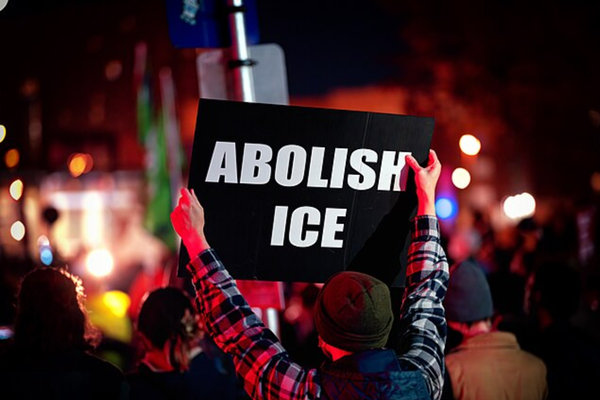"All we do is take pictures," says an unseen paparazzo midway through the new Princess Diana documentary, The Princess. "The decision to buy the pictures is taken by the picture editors of the world, and they buy the pictures so their readers can see them. So at the end of the day, the buck stops with the readers."
It's a cop-out, of course, and just one of the many unsettling voices laid over the film's archival tapestry of news footage, television clips and tabloid shots, which resembles less historical record than it does some kind of elaborate media simulation; a woman's life manufactured and sold to an eager public until her handlers decided she was expendable.
But the remark does summon those age-old spectres of supply and demand. Who really killed Diana that fateful day in 1997, when her Mercedes collided with a Parisian pole at high speed? Was it the paparazzi? The Queen? Might it have been – to paraphrase Sympathy for the Devil – you and me?
As one of the reigning titans of late-20th-century monoculture, the Princess of Wales was both a harbinger of our current 24/7 celebrity obsession and the last – alongside her fellow superstar deer-in-the-spotlights, Michael Jackson – of a literal dying breed of stars, their colossal fame complicated by narratives often dependent on, and at the mercy of, a ruthless media.
Comprised entirely of archival footage, the film captures the short, meteoric life of the world's most photographed woman through the eyes of the mass media that surveilled her, moving from the tail end of Diana Spencer's teenage years to the turbulent events of the 90s that played out across the tabloids.
It's an approach that's become more common in documentary cinema in recent years, especially in films that tangle with beloved famous figures, such as Asif Kapadia's Amy, or the forthcoming David Bowie tribute Moonage Daydream; these are works that eschew talking heads and downplay overt editorialising, allowing the footage to speak for itself. (Frederick Wiseman, venerable master of the form, is owed quite a few cheques.)
Director Ed Perkins, who was Oscar-nominated in 2019 for his short film Black Sheep, has a sound grip on the style. He understands the inherent power of editorial silence, of allowing the footage to evoke our collective memories of Diana, and to implicate us as viewers in the process.
The effect is both nostalgic – it's a time we'll never see again, buried in the fuzzy grain of U-Matic history – and eerily prescient, anticipating the current social media-fuelled era of celebrity obsession. Diana's fame was the 80s and 90s equivalent of a life lived extremely online, filtered through endless screens over which she had little control. She didn't seem like a real person – until the shock of her mortality proved otherwise.
From the earliest footage, quaint by the standards of what was to follow, in which the shy, shag-cut teenager is questioned about her burgeoning relationship with the Prince of Wales, it's clear that Diana is staring down a long and gruelling road of media scrutiny.
There are some early, eyebrow-raising moments: Charles, 12 years Diana's senior, interviewed on British TV just before their wedding, remembers his first meeting when she was a "bouncy and attractive 16-year-old". One news commentator cheerfully announces that Diana's father – in the year 1981, though you'd think it was the 19th century – "even vouched for her virginity".
Things are already fraught by the time the film lays out the couple's famous nuptials, a fairytale-like event that gripped – and distracted – an economically depressed nation plagued by unemployment and a rising National Front. ("Don't do it, Di!" announces one cheeky badge sold on the day; it must be a collector's item.)
Seen here, the marriage – and the births of Princes William and Harry in 1982 and 1984 – seems less celebratory than chilly, with Perkins and his editors cutting almost immediately from the wedding to arrival of Diana's sons, as though she was merely conscripted to crank out her husband's heirs and secure his succession to the throne.
In one creepy scene, Diana, holding baby William, is flanked by the Queen and the Queen Mother, who look less like benign monarchs than the doting-but-devilish old neighbours of Rosemary's Baby, delighted that their young bride has born seed.
It's only when Diana begins to emerge as her own person that she becomes a figure of inconvenience; her style, charm, and ability to connect with the people soon eclipsing the appeal of her archaic family.
Yet as one TV talking head notes: "When you put a modern person in an ancient institution, they will be destroyed."
The Princess quietly builds an impression of a woman with little to no agency in her own life, who'd been ushered into an institution as a teenager without experiencing the outside world. Diana was bound to crack – a familiar narrative that resurfaced, in abstracted horror-movie form, in Pablo Larraín and Kristen Stewart's collaboration on Spencer earlier this year.
Perkins offers a dramatically scored scene of royal hounds tearing apart a rabbit to underscore Diana's plight, while teasing clips in which Camilla Parker Bowles – Charles's longtime lover – lurks at the edges of the frame, anticipating the end of the fairytale marriage whose collapse would play out in the tabloids.
It's in these late sequences – so-called Dianagate, "annus horribilis", the bombshell interview with Martin Bashir – that the true ugliness of the media takes shape, while Charles and Diana lob shots at each other for the nation to see.
In one of the film's most affecting moments, Diana strides through an airport using a tennis racquet as a shield against a paparazzi scrum – yet can't help but stop to accept flowers from a little girl, even in this horrific moment.
There's nothing in The Princess that we haven't seen before, no historical revelation to the narrative, but its construction possesses a quiet, eerie grace.
Funeral footage of Diana's coffin being carried from Westminster Abbey echoes her fairytale appearance on the steps of St. Paul's Cathedral on her wedding day – 16 years apart, but, thanks to cinema's uncanny ability to compress time, seeming like they bookended the same long, turbulent day.
It's as though the princess emerged from her wedding directly into a casket.
The sense of inevitability – of our own role in manifesting these images – only makes it more haunting.
The Princess is in cinemas from August 11.







